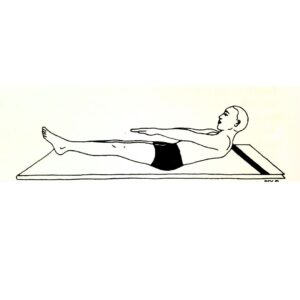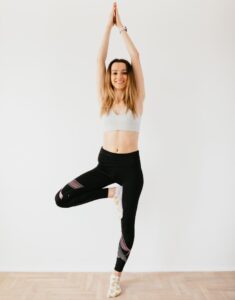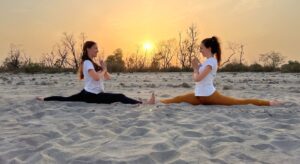Many people use eyeglasses or contact lenses to improve their vision, but it’s important to understand that these Yoga Exercise for Eyes do not provide a cure for impaired vision. In fact, depending on corrective lenses frequently increases eye issues, necessitating the use of ever stronger prescriptions.
Artificial and insufficient lighting, extended computer usage, television or video viewing, poor food, muscular inefficiency due to long hours of office work and study, mental and emotional stress, toxic state of the body, and ageing are all factors that lead to vision problems.
Contrary to the general belief, lengthy durations of reading do not hurt the eyes if both the mind and the eyes stay calm during the activity. Tension, on the other hand, can strain the eyes even during brief reading sessions. It is critical to cultivate the capacity to read with a calm mind and eyes, as well as proper posture. If there is any mental or physical stress in the eyes before beginning to read, doing shashankasana for a few minutes may considerably quiet the mind and relax the eyes.It is stated that walking barefoot on grass, sand, or bare ground early in the morning or around sunset has a soothing and pleasant impact on the eyes. This is due to reflex connections between the soles of the feet and the brain’s visual centers. It is especially beneficial if the feet are frequently restricted by tight footwear.
You may also take a modest sun bath while facing the rising or setting sun. The eyes should be shut. Feel the UV rays calming and relaxing your eyes.
Yoga Exercise for Eyes
The Yoga Exercise for eyes must be done on a regular basis with patience and endurance. Expect no immediate cure or improvement. It takes years for the eyes to become faulty; it will also take time, a few months or more, before there is any discernible change. However, as many individuals who have chosen a yogic way of living and progressively lowered the strength of their glasses have discovered, improvement will come.
Exercise 1: Palming
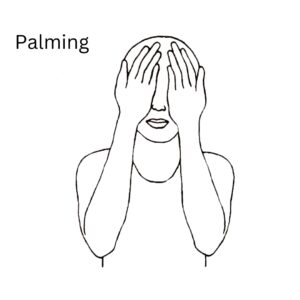
How to perform
- Close your eyes and sit quietly.
- Rub your hands’ palms together vigorously until they are heated. Place your palms softly over your eyelids, without applying too much pressure.
- Feel the warmth and energy flowing from the hands into the eyes, as well as the eye muscles relaxing.
- The eyes are being soothed by the darkness.
- Continue to hold this position until the heat from your hands has been absorbed by your eyes.
- Then drop your hands while keeping your eyes closed.
- Rub the palms together again until they are heated, then lay them over the closed eyes. (Make sure your palms, not your fingers, cover your eyes.)
- Repeat this process at least three times.
Benefits
Palming relaxes and revitalizes the eye muscles while also stimulating the circulation of the aqueous humour, the liquid that runs between the cornea and the lens of the eye, which aids in the correction of poor eyesight.
Exercise 2: Blinking
How to Perform
- Sit with your eyes open
- Blink 10 times fast
- Close your eyes and take 5 or 6 deep breaths.
- Repeat the blinking 10 times quickly
- Close your eyes and rest
- Repeat 5 times.
Benefits: Many persons with poor vision blink sporadically and unnaturally. This is connected to the state of habitual ocular strain. This exercise induces eye muscle relaxation.
Exercise 3 : Side viewing
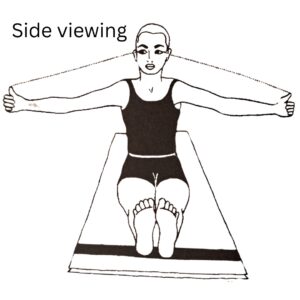
- Assume a sitting posture with both legs straight out ahead of you.
- Raise the arms straight to the sides at shoulder level, create a loose fist, and point the thumbs skyward. When the head is turned forward, the thumbs should be in the peripheral view. If they are not clearly visible, move them slightly forward until they do. There should be no movement of the head. Look at a fixed spot in front of you that is level with your eyes. Fix the head posture in this neutral position. Then, without turning the head sideways, fix your gaze on the following items, one after the other:
- Left thumb
- Space between the eyebrows, bhrumadhya
- Right thumb
- space between the eyebrows
- Left thumb.
- Repeat this cycle 10 times while maintaining the head and spine straight
- Finally, close your eyes and relax.
- Palming can be done numerous times.
Breathing:
- Inhale whilst in the neutral posture.
- Exhale while glancing around.
- Inhale and bring your attention to the center.
Benefits:
Sideways viewing relieves muscular stress caused by frequent reading and close work. It also helps to avoid and cure squinting.
Note for practice:
If the arms grow fatigued, they should be supported by two chairs.

